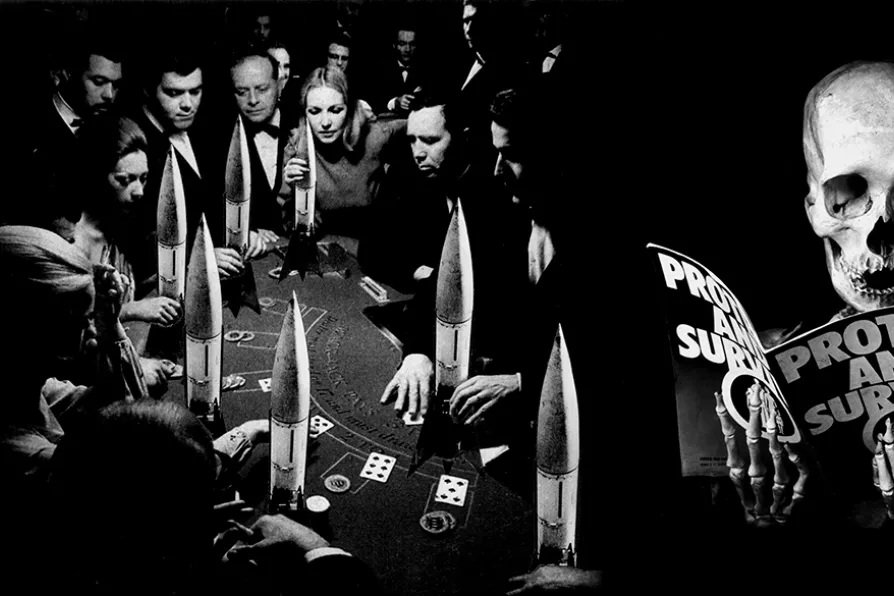ANDY HEDGECOCK picks out his cultural highlights of 2025

 Peter Kennard, (L) The Gamble, 1986; (R) Protest and Survive 1980
[Courtesy of the artist]
Peter Kennard, (L) The Gamble, 1986; (R) Protest and Survive 1980
[Courtesy of the artist]
Peter Kennard: Archive of Dissent
Whitechapel Gallery, London
SINCE the early 1970s, Peter Kennard’s art has not only documented the anti-war/ anti-capitalist movement but been an integral part of it; both as revelation and stimulus.
Indeed, he reveals their links and stimulates the processes of resistance. He may be the only artist whose art — and it is art, not propaganda — has appeared on the streets and aloft at demonstrations as well as in newspapers and galleries. You could consider him the artist in residence of the human conscience.
“My art,” he says, “erupts from outrage at the fact that the search for financial profit rules every nook and cranny of our society. Profit masks poverty, racism, war, climate catastrophe and on and on …”

Peter Mitchell's photography reveals a poetic relationship with Leeds













